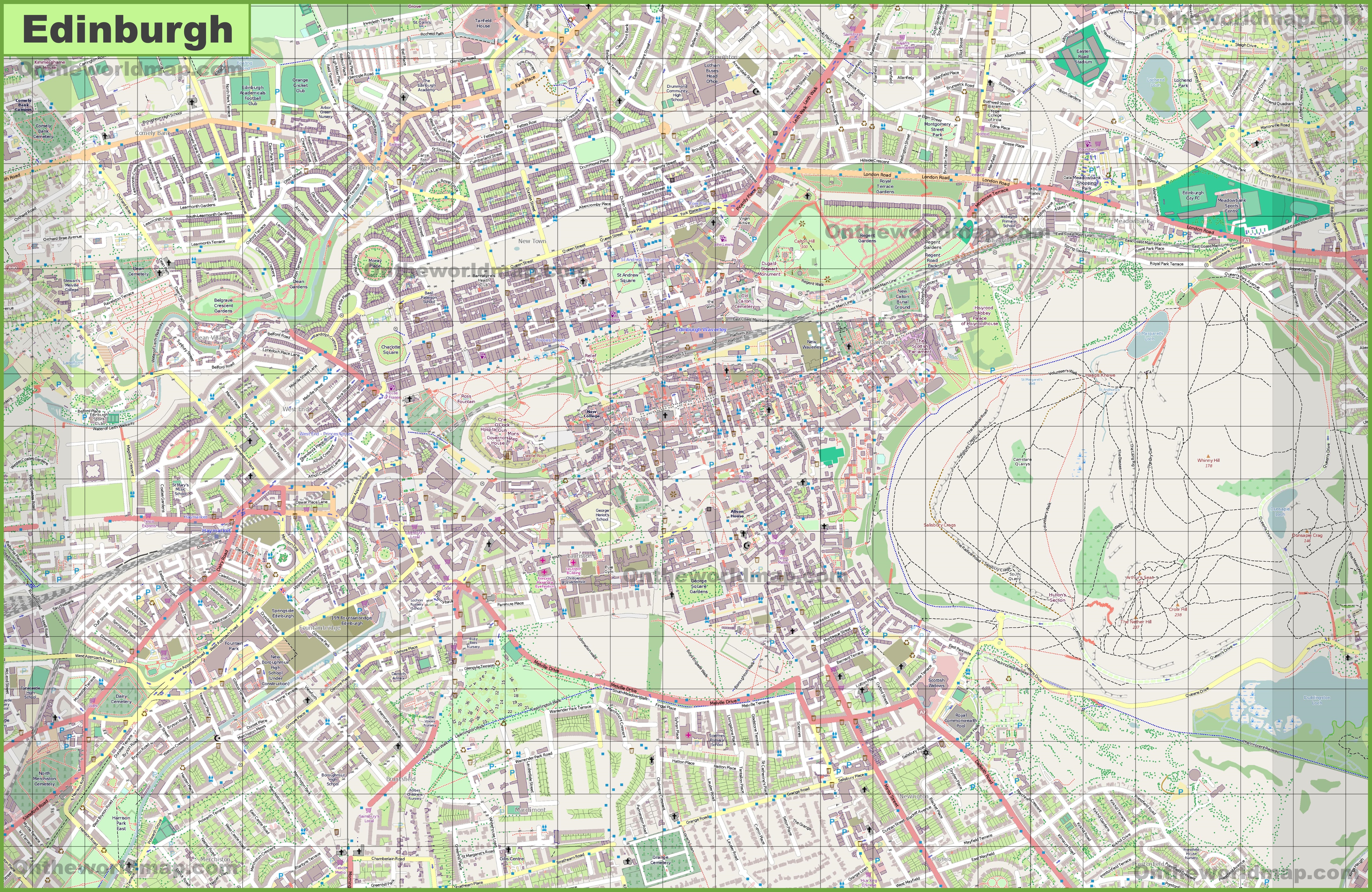
Large detailed map of Edinburgh
The first House was built in 1767 and still stands today. The maps below show all the things to lookout for in the new town and in the extended new town north of Queen Street. Also included in this map is Leith. Famous People's houses and Attractions. Things to see.
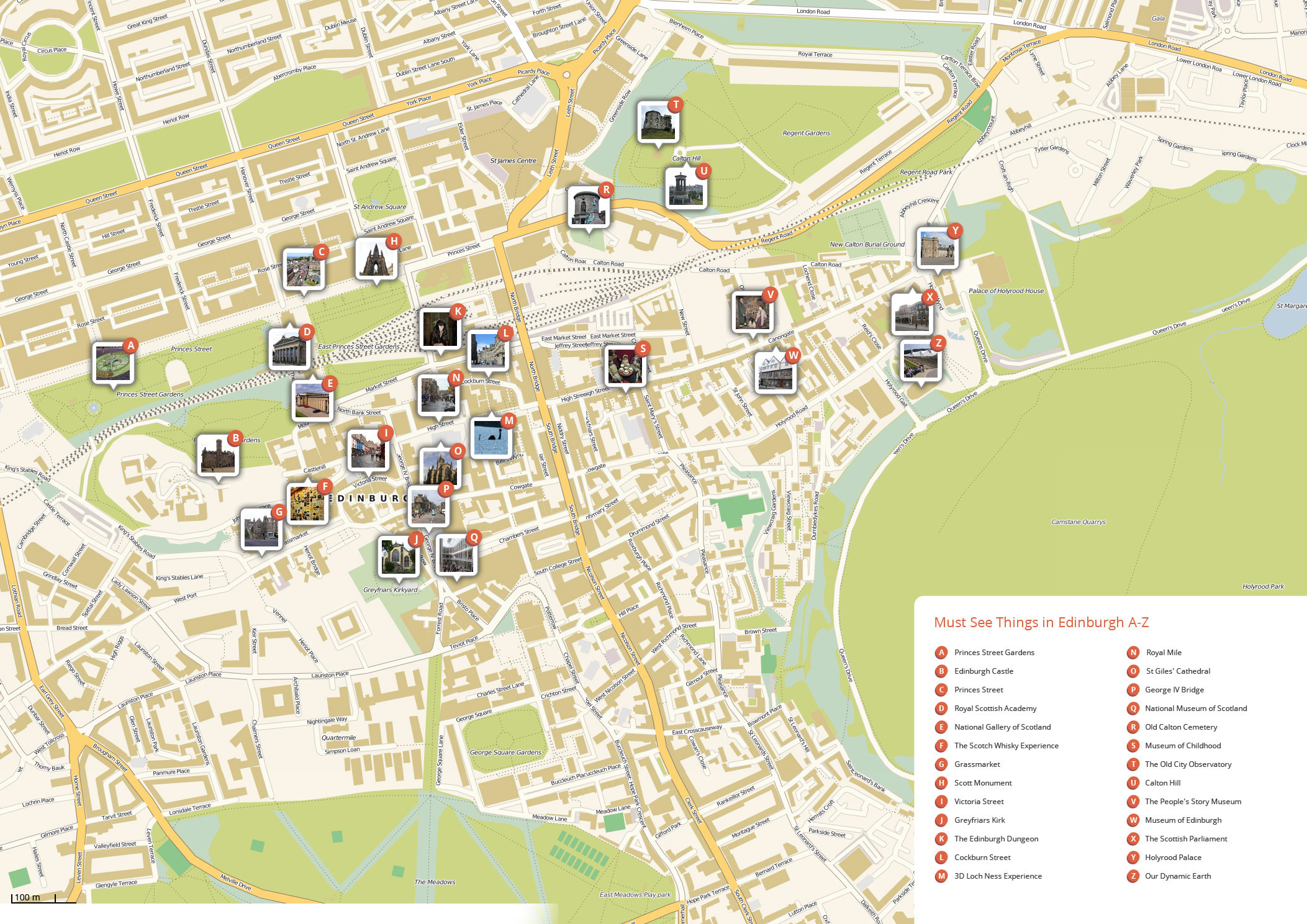
Edinburgh Attractions Map PDF FREE Printable Tourist Map Edinburgh
New Town Map. Edinburgh's New Town is a masterpiece of historic city planing and today is a distinct working and residential area. Home to The Royal Botanic Gardens, Inverleith Park, Stockbridge (a village in the city) and the Grange Cricket Club which has a Victorian Pavilion. The New Town is home to an upmarket range of independent eateries.
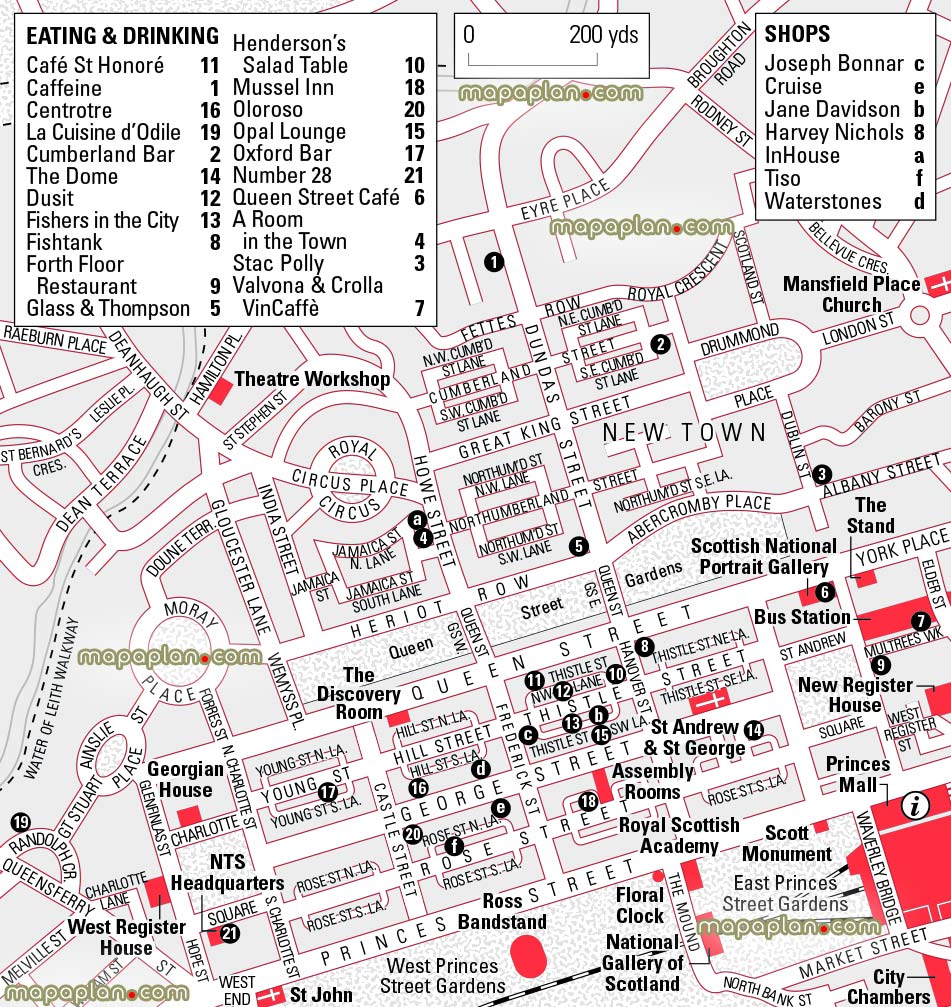
Edinburgh top tourist attractions map New Town map with mustsee
Spanning 37 acres, the park sits in the shadow of the imposing Edinburgh Castle and runs alongside the bustling Princes Street, one of the city's main shopping thoroughfares. The stunning gardens are divided into two parts by the Mound, which is a man-made hill that separates the Old Town and the New Town.
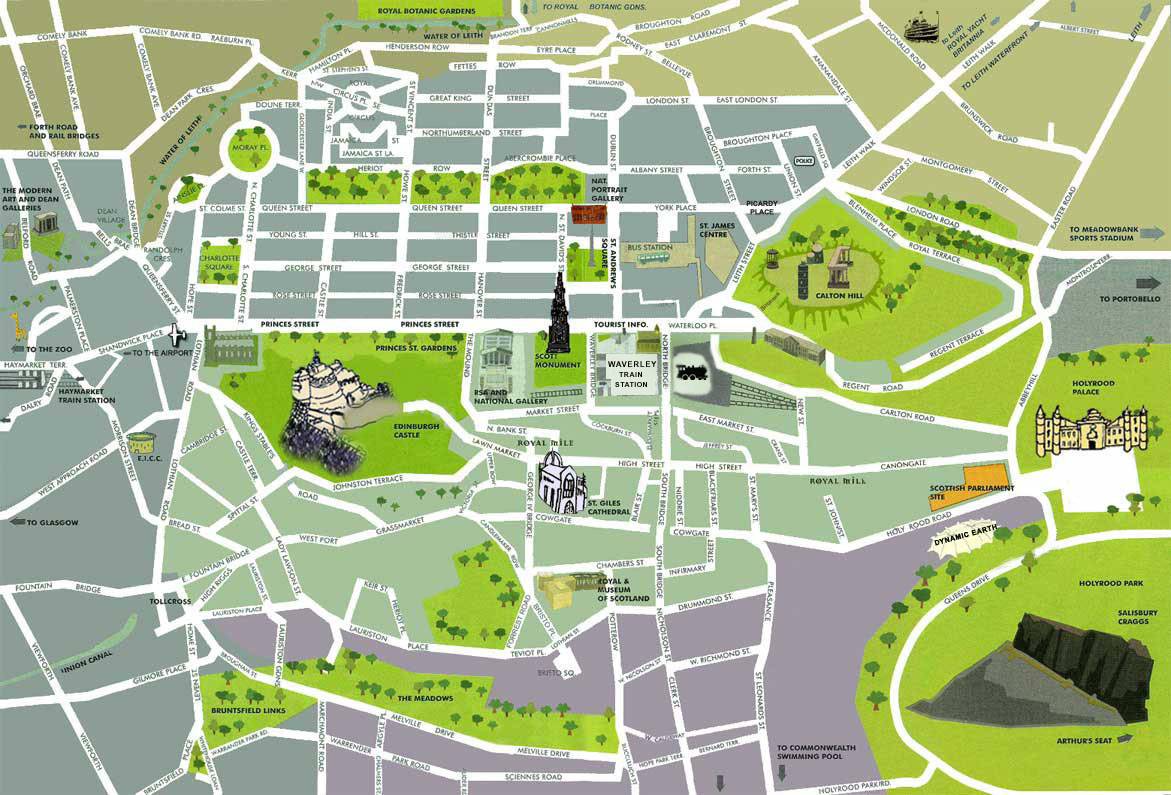
Large Edinburgh Maps for Free Download and Print HighResolution and
World Heritage Site boundary map. The Old and New Towns were added to the World Heritage list in 1995, because of their striking contrast and quality in architecture and streetscape. For that reason, the boundary of the World Heritage Site was carefully drawn to include the best examples of those contrasting designs. Edinburgh World Heritage's.

Edinburgh tourist map
Visiting New Town There's a lot to explore in Edinburgh's New Town, and a good place to start is the New Town calling card, the Princes Street Gardens, created when Edinburgh's largest loch, North Loch, was drained in the construction of the New Town.Take a relaxing stroll through this haven amid the city, visitors can see The Mound, the Princes' flower clock, and Ross Fountain, the.
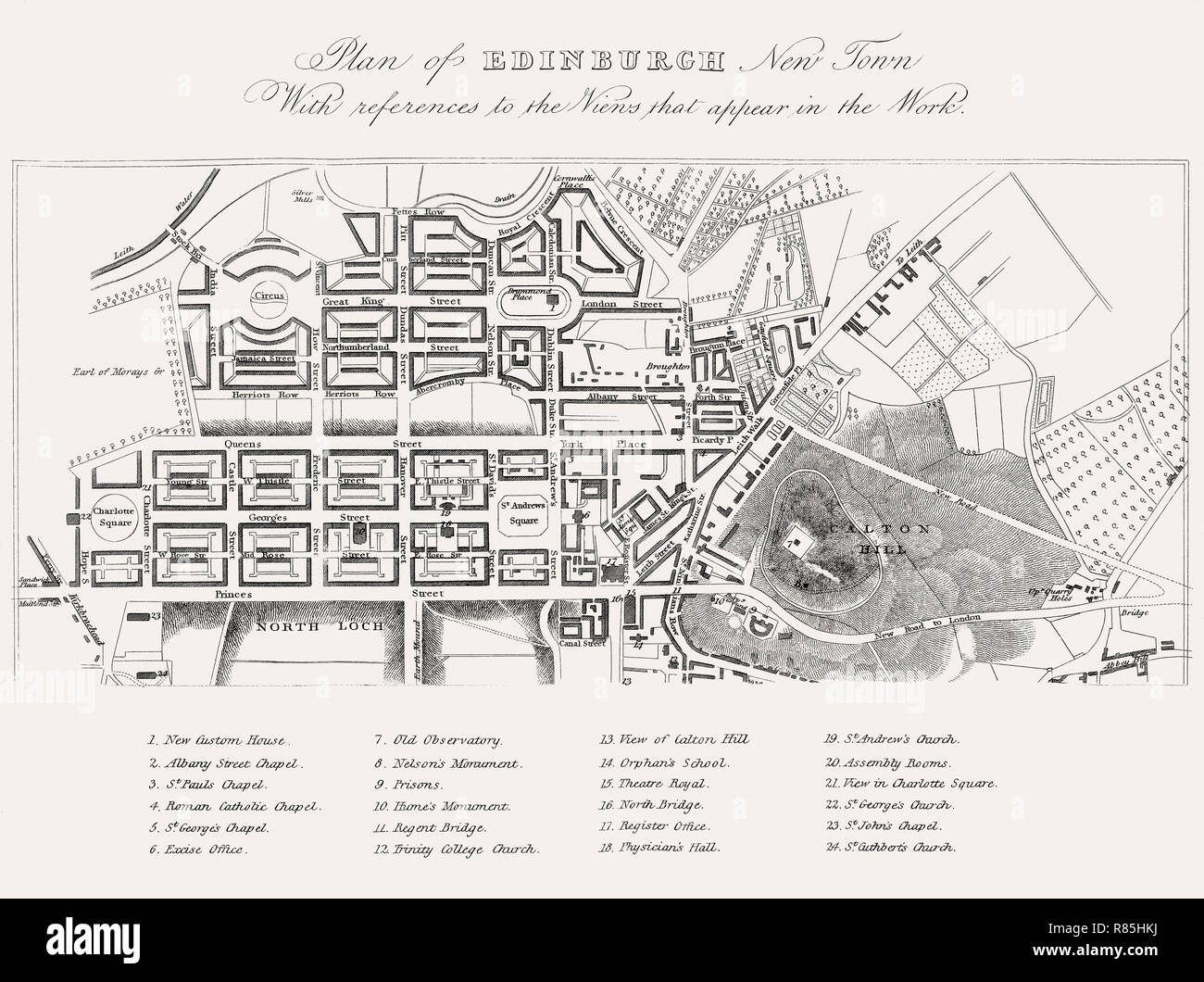
Plan of Edinburgh, New Town in 1820, Scotland, 19th century, Views in
The New Town is a central area of Edinburgh, the capital of Scotland.It was built in stages between 1767 and around 1850, and retains much of its original neo-classical and Georgian period architecture. Its best known street is Princes Street, facing Edinburgh Castle and the Old Town across the geological depression of the former Nor Loch.Together with the West End, the New Town was designated.
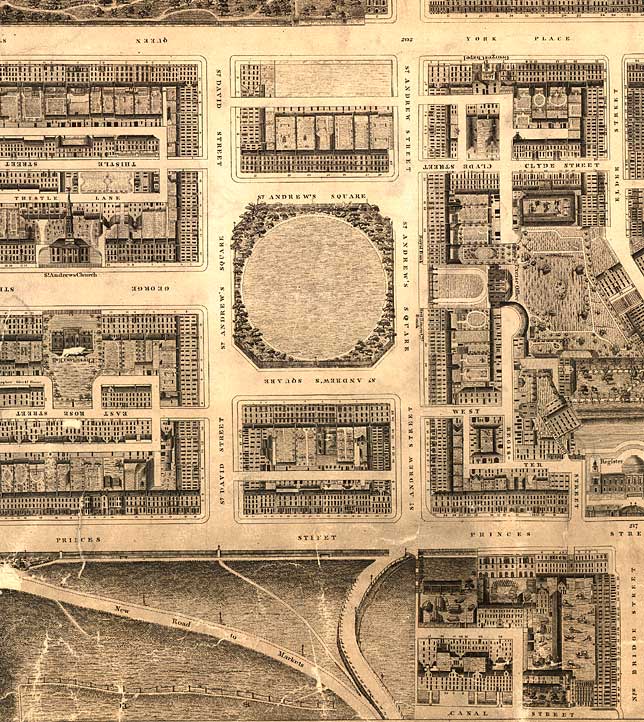
Edinburgh Map 1819 by Robert Kirkwood The First New Town (East
The New Town is central to Edinburgh's identity as a city of Enlightenment ideals and intellectual vigour. Its broad avenues, lined with Georgian townhouses, create a sense of space and order. The New Town's role as a hub for cultural institutions, shops, and residences has made it a desirable area to live, visit, and do business.

Edinburgh New Town 1877 (Edinburgh Large Scale Sheet 29) Old OS Maps
Getting to New Town. You'll find three public transport hubs within walking distance of the city centre: Edinburgh Bus Station, Edinburgh Waverley Train Station and Edinburgh Trams Terminus. Princes Street and George Street are well served by Lothian Buses, with services from across the city stopping here.. If you want to get a real flavour of Edinburgh, why not try a City Sightseeing Tour.
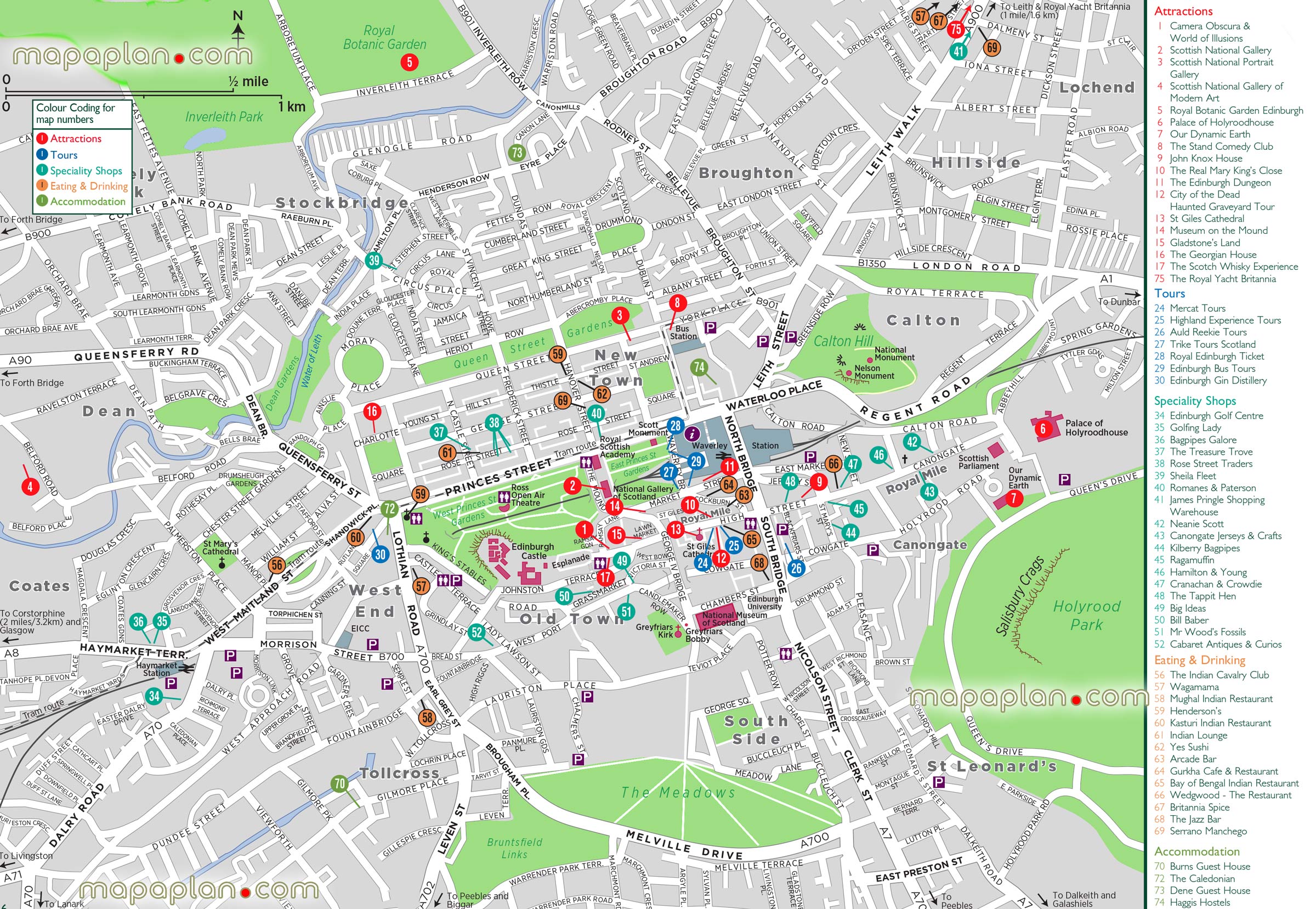
Edinburgh map Edinburgh inner city center printable map with top
The New Town of Edinburgh is much older! This was built during the 18th Century and many of the roads are well laid out and planned. There are lots of nice buildings and statues to admire as you stroll about. It's not to be confused with the Old Town which is the part of Edinburgh which includes the Castle, Royal Mile and the surrounding area.

Edinburgh map Central Edinburgh, Scotland visitor's 3d interactive
Edinburgh New Town. Edinburgh's New Town, located in the northern half of Scotland's capital, is a stunning mix of architecture and history. Designed in the 18th century, the New Town sits in striking contrast to the medieval charm of the Old Town and features many of the city's top attractions. The New Town's history is deeply.

Edinburgh map Edinburgh World Heritage site Old and New Towns
Edinburgh is one of the world's most beautiful cities. Its historic heart is one of the most striking and architecturally significant in the world, thanks to the dramatic juxtaposition of its Old and New Towns. In the 18th century, the Old Town was considered unfit for purpose. Overcrowded and unhygienic, the city's upper classes envisioned.

ROSE STREET MAPS EDINBURGH NEWTOWN
The Old and New Towns of Edinburgh became a UNESCO World Heritage Site in 1995. The site covers an area of approximately 4.5km2 and contains nearly 4,500 individual buildings as well as ancient monuments, designed landscapes, and conservation areas. The Management Plan. Scotland's UNESCO trail.
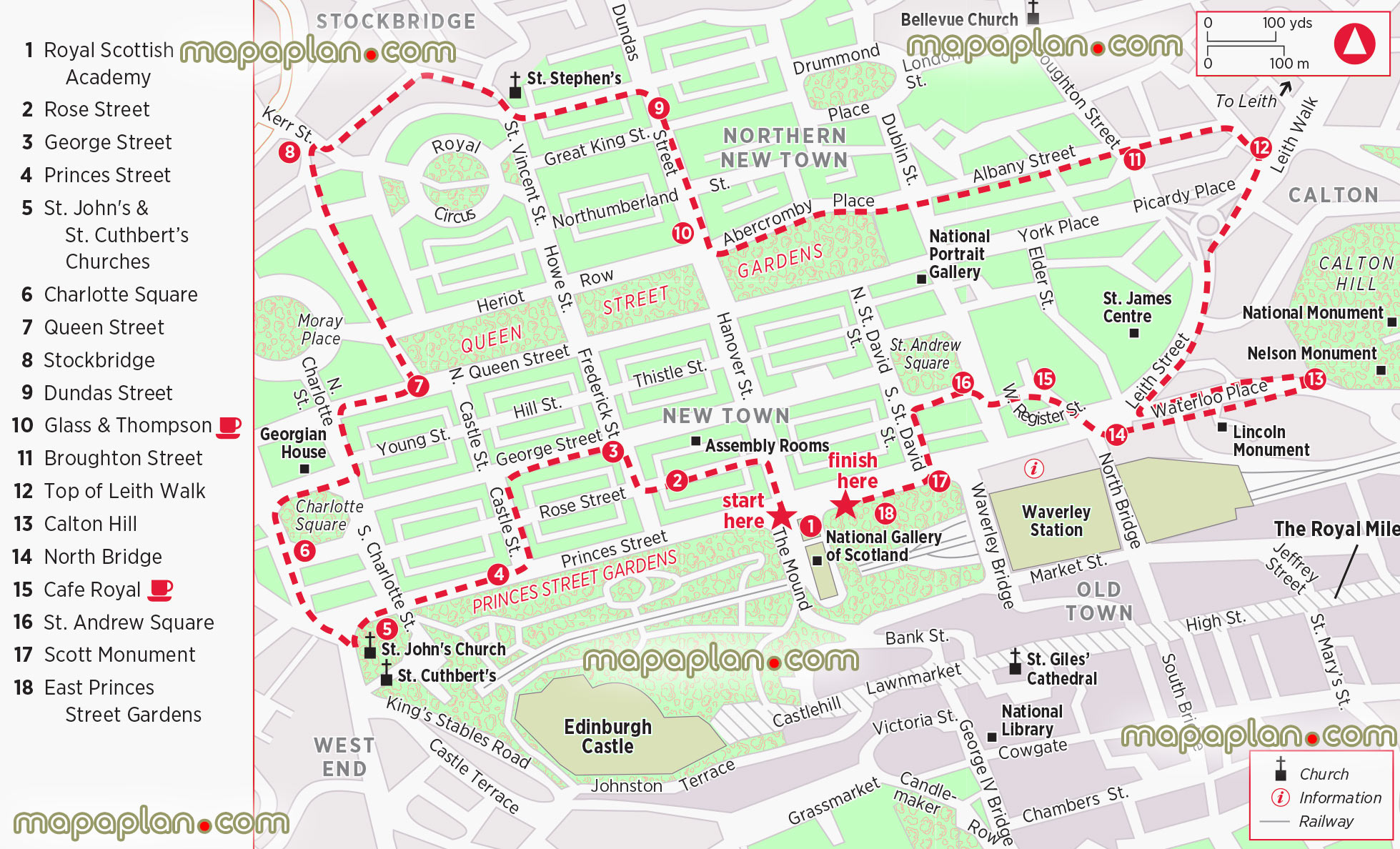
Edinburgh maps Top tourist attractions Free, printable city street
This Edinburgh New Town Walk is an easy historical walking tour to the Dean Village, the Water of Leith, Stockbridge and through the streets of Edinburgh's historic New Town. Start of the Walk. Like a great many of my walks this walk starts from outside the Caledonian Hotel at the west end of Princes Street.
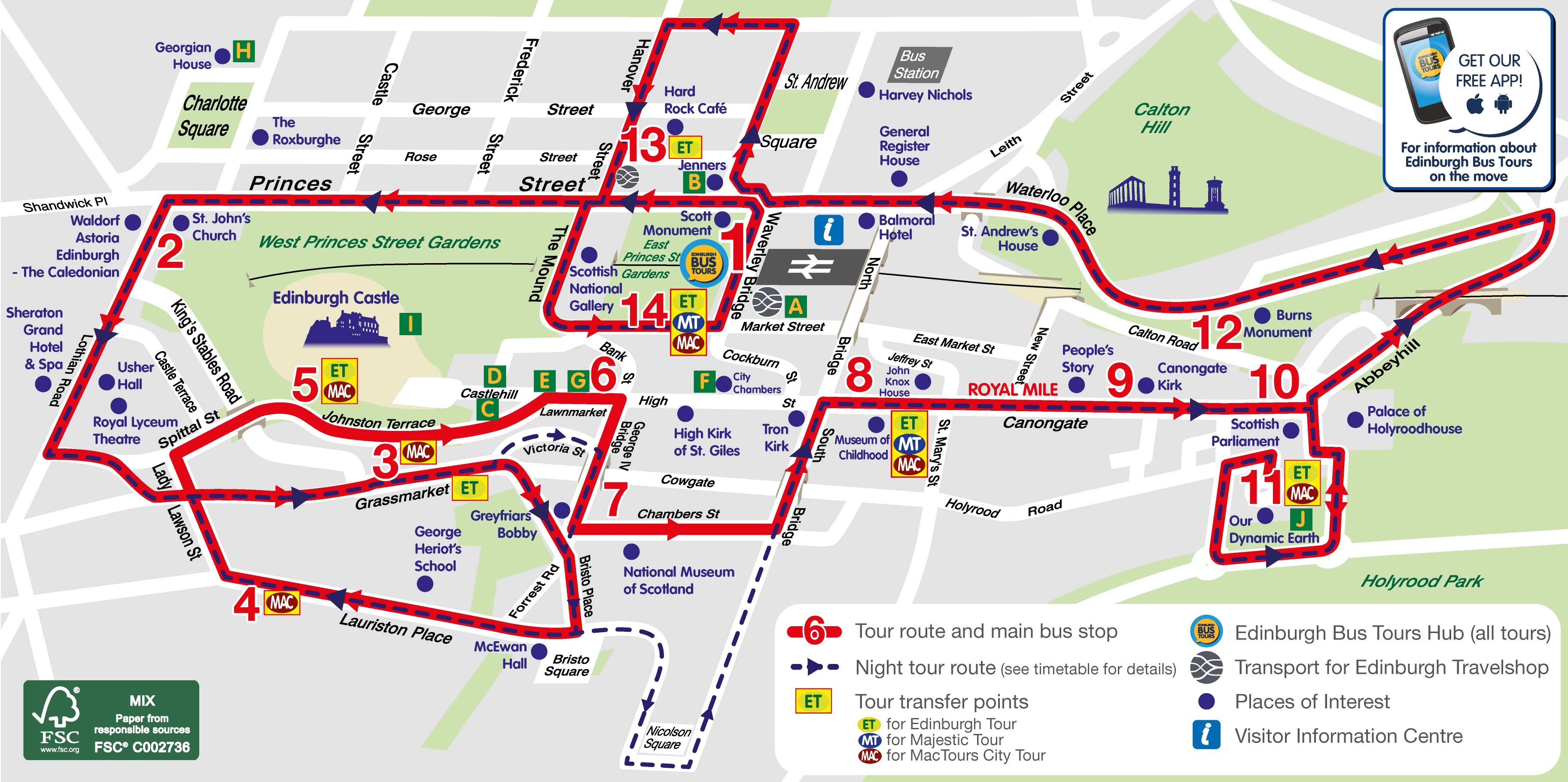
Gratis Edinburgh Stadtplan mit Sehenswürdigkeiten zum Download
New Town New Town of Edinburgh is 250 years old, in contrast to the Old Town settled for over a thousand years. It was laid out on a grid pattern in the late 18th century with elegant Georgian townhouses, and the intervening loch was drained to become Princes Street Gardens.

A tour of Edinburgh New Town private park Cobble Tales
Edinburgh's Old and New towns were inscribed as a UNESCO World Heritage site in 1995, in recognition of their international importance. The World Heritage Site is cared for by the Edinburgh World Heritage Trust. "Edinburgh, capital of Scotland since the fifteenth century, presents the dual face of an old city dominated by a medieval fortress.
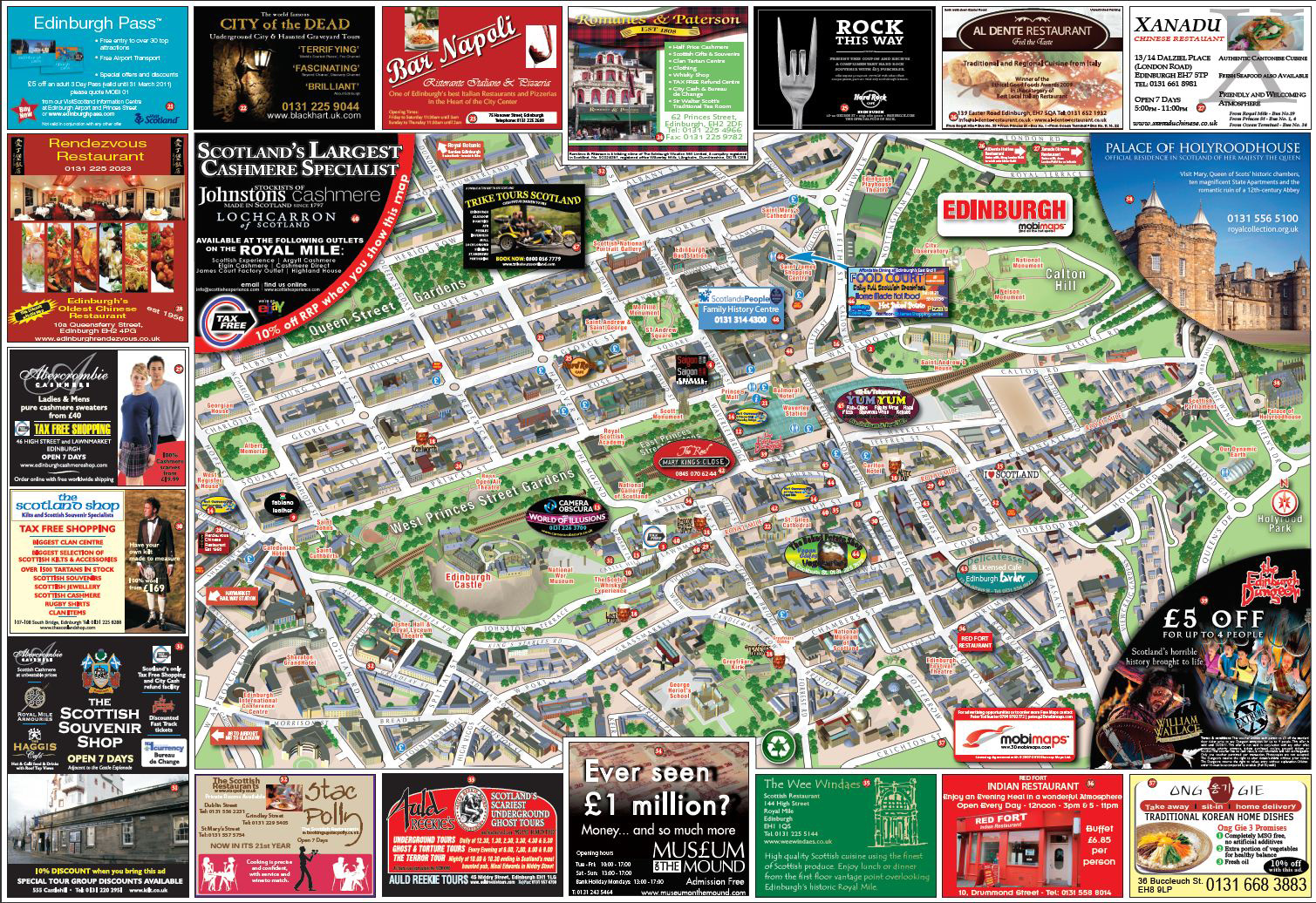
Gratis Edinburgh Stadtplan mit Sehenswürdigkeiten zum Download
Old and New Towns of Edinburgh. Edinburgh has been the Scottish capital since the 15th century. It has two distinct areas: the Old Town, dominated by a medieval fortress; and the neoclassical New Town, whose development from the 18th century onwards had a far-reaching influence on European urban planning. The harmonious juxtaposition of these.